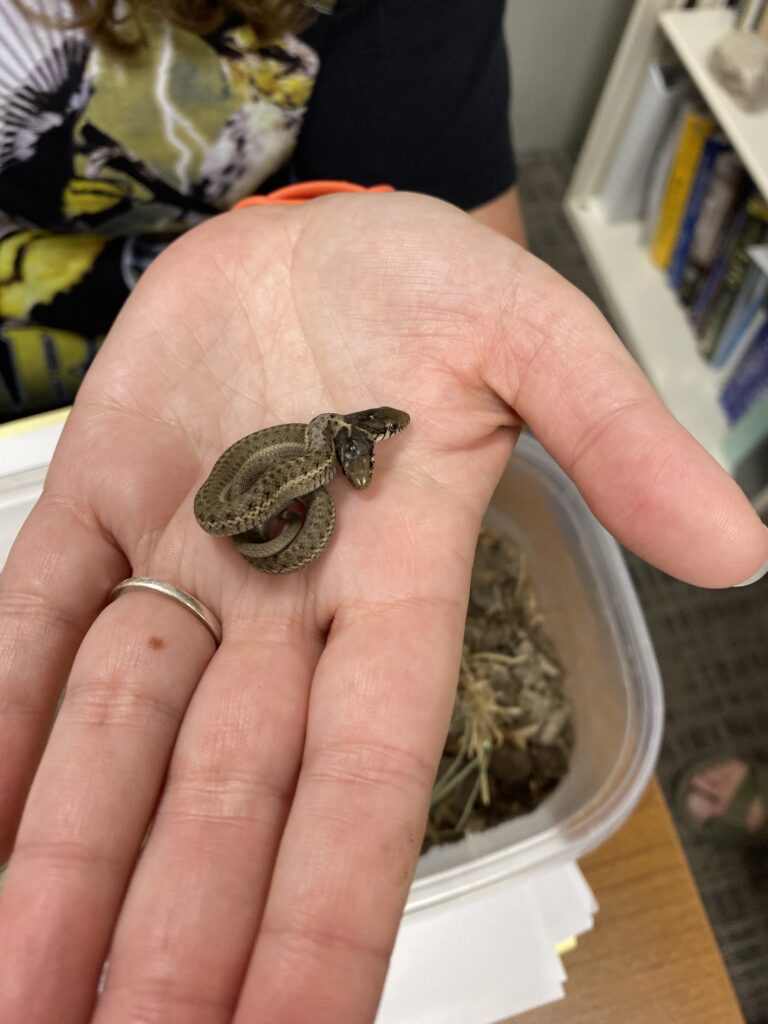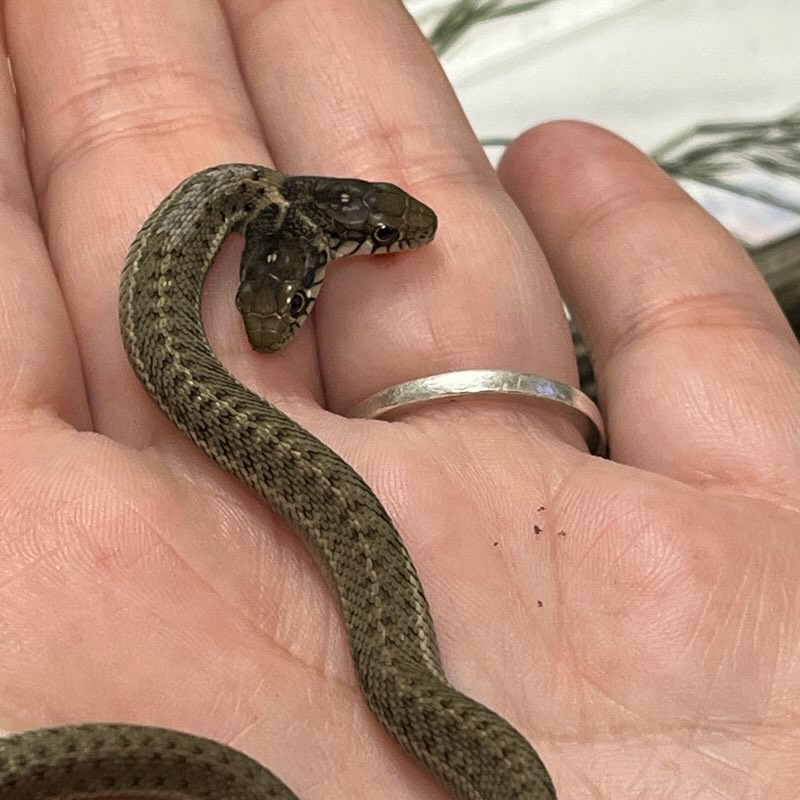By Lairen Brush
A two headed snake was discovered north of Casper in Edgerton by Brian Wagner who donated it to Casper College for Charlotte Snoberger to care for and observe.
“[Brian Wagner] found it in a garage,” Snoberger said.

The snake heads appeared to be operating separately, however, there was no dominant head established yet.
“They each stuck out their tongues separately, and they each opened their heads separately,” Snoberger said. “I don’t know if there was a dominant one. There’s one that kind of lined up more with the body.”
There are many interesting facts about a two-headed snake.
According to the Repatarium, “This condition is known as bicephaly. Bicephaly translates to “bi,” meaning two, and “cephaly,” meaning head. Bicephaly occurs when there is an incomplete splitting of an embryo.”
“But [Wandering Gartersnakes], ‘give live birth’ meaning that they have internal eggs that are reabsorbed by the body, so they don’t actually lay eggs,” Snoberger said.
This condition can be found in humans, however it has a different name.
According to the Smithsonian Magazine, “When this situation arises in humans, it’s known as conjoined twins.”
The snake lived for about 3-4 months which is fairly long for a two-headed animal.
“For every 100,000 snake births only 1 will be a two headed snake. That’s a 0.001% chance of reproducing a two-headed snake.” The Repatarium said,
This is rare even for someone who works with snakes like Snoberger.
“But, I’m a herpetologist. I’ve worked with a lot of snakes, a lot of wild snakes, and I’ve definitely never seen anything like that,” Snoberger said.
There were no noticeable defects.
“They both looked perfect. And they were both clearly alive, you know,” Snoberger said. “They were both clearly functioning.”
The snake moved strangely presumably because of its peculiarity.

“If it moved forward like a normal snake, it seemed like its head would get stuck in between the two heads,” Snoberger said, “So it had a tendency to move backwards and to the left, because the second head stuck out to the right.”
The snake died on Nov. 5. How it died is unknown, whether it was from being unable to digest properly or any number of issues with two-headed snakes.
“My husband was like, ‘that’s a long time for a two headed animal.’ I think it did pretty good” Snoberger said.
The snake will be preserved for viewing at Casper College.
“And we’ll preserve the snake in ethanol and keep it at the college.” Snoberger said in an email.
The snake will be available by next semester, students can email Charlotte Snoberger at charlotte.snoberger@caspercollege.edu, to see the snake in all its preserved glory.
